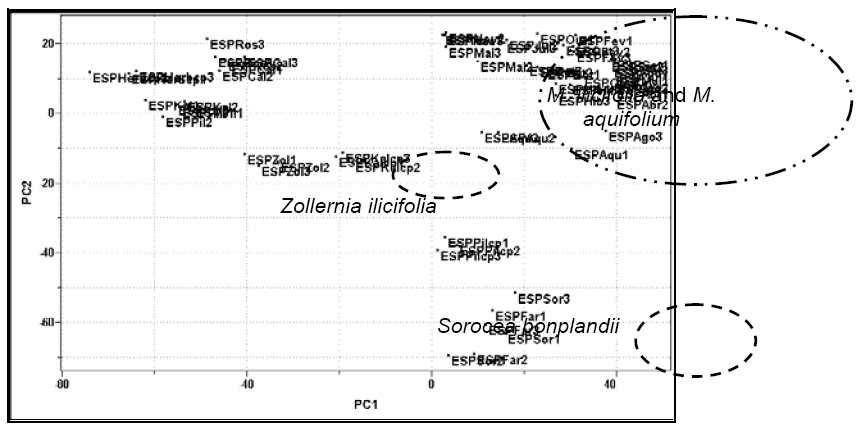
Figure 1: Score plot of 1H NMR data: PC1 (29.9%) vs PC2 (13.8%).
Daolio C., Alcântara G. B., Ferreira A. G., Ferreira M. M. C., "Quality Assessment of Espinheira-Santa Phytomedicines Using 1H NMR Spectroscopy and Principal Component Analysis". Águas de Lindóia, SP, Brazil, 10-15/09/2006: 10th International Conference on Chemometrics in Analytical Chemistry (CAC-2006, CAC-X), Book of Abstracts (2006) P016. Poster 016. This work was granted at CAC-2006 (one among the three best posters).
10th International Conference on Chemometrics in Analytical Chemistry P016
Quality Assessment of
Espinheira-Santa Phytomedicines Using 1H
NMR Spectroscopy and
Principal Component Analysis
Christina Daolio1,
Glaucia Braz Alcantara1*, Antonio Gilberto
Ferreira1, Márcia Miguel
Castro Ferreira2
glabraz@yahoo.com.br
1 Chemistry
Department - UFSCar - São Carlos/Brazil 2
Chemistry Institute - UNICAMP -
Campinas/Brazil.
Keywords: Maytenus ilicifolia,
NMR and Multivariate Analysis
_____________________________________________________________________________________
"Espinha-Santa" (Maytenus ilicifolia
and Maytenus aquifolium, Celastraceae)
leaves are
utilized in
Brazilian health programs as alternatives
to the more expensive synthetic anti-ulcer
drugs,
because of their
proven activity against gastritis and gastric ulceers1.
However the species Sorocea
bonplandii
(Moraceae)2 and Zollernia
ilicifolia (Fabaceae)3
are common adulterants for these medicinal
plant due to their morphological
similarity. Sometimes the accurated morphological evaluations
are limited
in the cae of crushed
of powered drugs so 1H NMR
and chemometric analysis could be an alternative for
quality control of crude
drugs.
In this work we analyse samples with official botanical classification
of M. ilicifolia, M. aquifolium,
Sorocea bonplandii
and Zollernia ilicifolia species and some commercial samples by
using liquid 1H NMR.
The spectral data showed
after PCA that the samples sold in Brazilian market are not from M.
ilicifolia or M.
aquifolium.
It is possible to observe that some of them
are close with Zollernia ilicifolia and Sorocea
bonplandii and most
of them are completely different from these species. In this
case, probably, it will be a
different plant species.

Figure
1: Score plot
of 1H NMR data: PC1 (29.9%) vs PC2 (13.8%).
These preliminary results open the possibility
that the NMR/Multivariate Analysis might be
a
powerful combination, when
applied to a suitably enlarged group of samples, to
provide rapid information
about quality control for
phytotherapeutic medicines.
The 1H NMR data were acquired
in BRUKER 9.4 Tesla equipement and all measurements were
done in triplicate
using a 5 mm inverse detection probe and
the multivariate analyses were done using
Pirouette®
(v. 2.7, Infometrix, USA). The analyzed teas were prepared by pouring
boiling water (50 mL) on
dried leaves (3 g).
Acknowledgment.
The authors are grateful to Dra.
Glyn Mara Figueira (CPQBA/UNICAMP) for the
donation of
authentic samples of Maytenus ilicifolia and Maytenus
aquifolium, to CAPES, CNPq and
FAPESP for financial support.
_____________________________________________________________________________________
References
1 Oliveira M.;
Monteiro M.; Macaubas C.; Barbosa V.; Carlini E. J. Ethnopharmacology 1991,
34,
29-41.
2 Vilegas J.
H.; Lanças F. M. Phytotherapy Research 1994, 8, 241-244.
3 Leite J. P.
V. et al. J. Agric. Food. Chem. 1991, 49, 3796-3801.